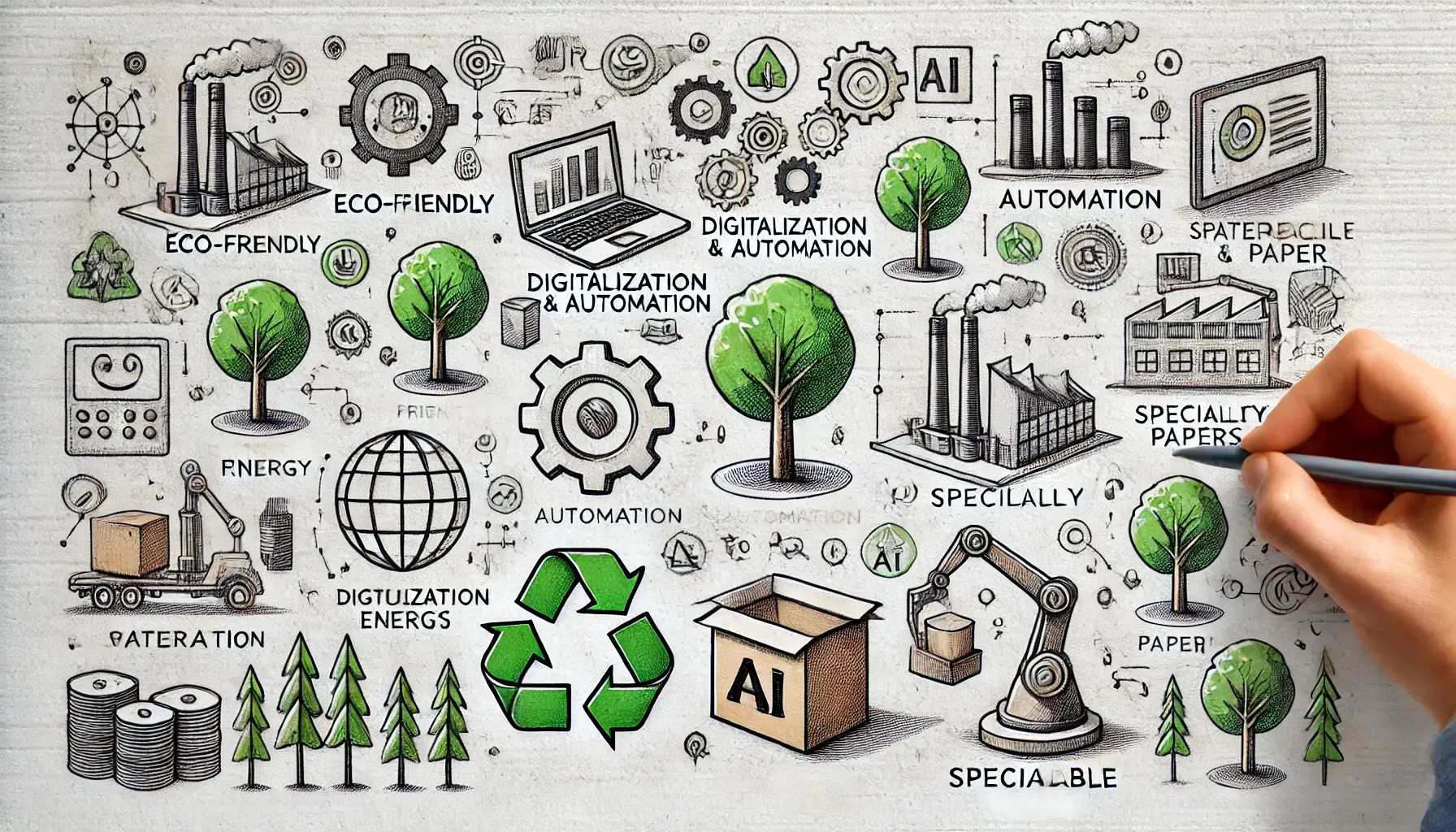The pulp and paper industry is rapidly evolving, driven by new technologies, sustainability demands, and changing consumer preferences. Here are some key modern trends shaping the industry:
1. Sustainability and Eco-Friendly Practices
Sustainability is at the forefront of the industry. Many companies are adopting eco-friendly practices, such as using renewable energy, reducing water consumption, and minimizing chemical use. Sustainable forestry and certifications like FSC ensure that wood is sourced responsibly, addressing environmental concerns.
2. Recycling and Circular Economy
The industry is embracing recycling to reduce waste and the reliance on virgin materials. Recycled paper is widely used, particularly in packaging, while companies also seek to reuse by-products from the production process, contributing to a circular economy model.
3. Digitalization and Automation
Technological advancements, such as AI, machine learning, and IoT, are transforming paper production. Digitalization improves operational efficiency, while automation enhances quality control and reduces costs by optimizing processes in real-time.
4. Demand for Specialty Papers
As demand for traditional paper declines, specialty papers like water-resistant and biodegradable varieties are growing in popularity. These papers are widely used in packaging, e-commerce, and other sectors that require unique properties.
5. Biodegradable Packaging
To combat plastic waste, companies are increasingly turning to biodegradable and compostable paper-based packaging. This is particularly important in the food and beverage industry, where paper is replacing single-use plastics.
6. Lightweight, High-Strength Papers
Advances in material science have led to thinner, stronger papers that reduce shipping costs without compromising durability. This is critical in industries like e-commerce, where weight and sustainability matter.
These trends highlight the pulp and paper industry’s shift toward a more sustainable, innovative future.
